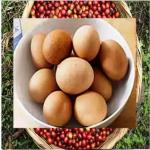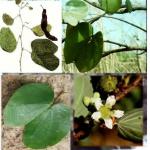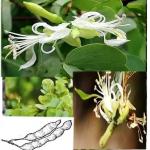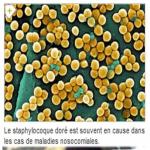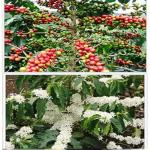03-Micro-breast: cause 2
Secondary cause: Hormone receptors
Click below to order clove oil
Remark
It is important to understand all the factors that intervene in the menstrual cycle of the woman and especially that of breast growth and the success of any breast enlargement program, buttock chest and others is at this price otherwise it is the assured failure or meager positive results. Read, search to understand so as not to be deceived and God knows that there are many scammers. To avoid taking large doses of hormones, with no results and worse, to prepare the ground for cancer because too much natural or synthetic estrogen can facilitate proliferation of undesirable cells.
Definition
A hormone receptor is a structure on the surface of the cell that is so spatially represented that only the hormone It can be like a piece of a puzzle.
Mechanism of action
The hormone receptor, binds the hormone to facilitate the transmission of a message specific (growth, secretion, etc.). A hormone-receptor complex is then formed which enters the cell and reaches the nucleus for its message. So it is in the nucleus, the hormone delivers its message, which will provoke a specific reaction, perhaps stimulating the cell to grow or secreting from it. The same cell may have several receptors for different hormones. For example, in the mammary glands we have alpha receptors sensitive to estrogen and beta receptors sensitive to progesterone. Thus, depending on which hormone is secreted or administered, the effects on the same organ will be different.
So it's not enough to have a good dose of sex hormones, and you also need receptors in quantity and quality, and any expansion program has to have those receptors to maximize the chances of successful breast, breast, buttock, and other growth. There are several types of hormone receptors present in the chest and elsewhere. The alpha receptors, the beta 1, 2, 3, 4, 5, etc. And probably others we haven't been able to identify.
Practical applications of the concept of hormone receptors
Many studies have been carried out and published on the behavior of receptors facing synthetic and natural hormones; it is known that synthetic hormones and natural hormones are capable not only of activating the receptors but also of binding to many hormone receptors. One application is the use of hormones, pills, and the like. Moreover, plant hormones have fewer side effects than synthetic hormones. It is quite appropriate, however, because the action of synthetic hormones is often immediate, whereas natural hormones produce a slow and safe action. It is up to everyone to choose in all knowledge of cause his breast enlargement program: immediate effect surgery or plants with slow and safe effect.
Receiver issue
A hormone receptor is a structure on the surface of a cell that has such a spatial configuration that the specific hormone can, like a puzzle piece, attach itself to it to gain the cell's nucleus to deliver its message, which may be growth stimulation or secretion. So it's not enough to have a good dose of sex hormones, but it also requires receptors in quantity and quality, and any expansion program has to have them to maximize the chances of successful breast, breast, buttock, and other growth. There are several types of hormone receptors present in the chest and elsewhere. The alpha receptors, the beta 1, 2, 3, 4, 5, etc. And probably others we haven't been able to identify.
Breast growth occurs as a result of the estradiol contained in the estrogen that the woman produces in early adolescence. Because of the action of gonadotropins secreted by the pituitary gland, the ovaries secrete estrogen that is carried in the blood, but breast cells need estrogen receptors in the quality and quantity needed for capture the presence of this estradiot and initiate their growth. Unfortunately, in some women, the number of receptors is insufficient or the receptors are of poor quality. This is because there are several types of estrogen receptors. Some, such as ERbeta2, are insensitive to estradiol but sensitive to other estrogens. These receptors help to stop the growth of the chest after puberty, as they gradually replace the estradiol-sensitive receptors in the chest. The breast then becomes progressively insensitive to estradiol. Most phytoestrogens The herbal contents bind particularly well to the 42 receptors of this type and can therefore allow the breast to grow as it does under the effect of estradiol of the girl during puberty. Thus, women who did not have an increased breast during puberty may not lack estrogen receptors but did not have the right receptors at the time of puberty. Some phytoestrogens are capable of activating estradiol-insensitive receptors.
Different types of estrogen receptors
There are several types of estrogen receptors present in the chest of each woman: alpha receptors, beta 1, 2, 3, 4, 5, etc. And surely others that biochemists have not yet identified. Many cells in the breast express these receptors: cells from the mammary glands but also from the surrounding connective tissue also play a role in the growth of the mammary glands since they are able to release growth hormones in response to certain estrogens. Often, cells contain several of these receptors that interact and form identical receptors different, needed to induce the transcription of certain genes. The quantity and quality of the receivers are essential for a harmonious development of the breasts.
The right receivers at the right time
A girl's breast normally contains a lot of good quality estrogen receptors, which will allow her to develop breasts during puberty. Over time, exposure to progesterone, in particular, modifies the cocktail of hormone receptors in the chest which then becomes unfavorable to breast growth. In some girls, the receptors are insufficient or in sufficient quantity but of poor quality and this poses a real problem in the transmission of the message of breast enlargement despite the normal dosage of estrogen. For example, during puberty of the cells of connective tissue around the mammary glands normally express many alpha-receptors that estradiol activates. However, not all girls do, because some adolescent girls may have a regular menstrual cycle with normal estradiol production, but their breasts do not grow because of receptor failure. Cells in the connective tissue around their mammary glands either do not express alpha-estrogen receptors or express beta-receptors instead of alpha-estrogen receptors and that makes growth by estrogen difficult or even impossible. . By using plants with a hormonal effect, these women can be given a second chance by helping the body to recreate the right cocktail of estrogen receptors for breast growth. Any correct breast, breast and other enlargement program should take this phenomenon into account in the selection of phytoestrogen plants. The secret to success is therefore to know how to take the right plant at the right time to first increase the sensitivity of the breast to estrogens and then stimulate growth itself. In any case, the cocktail of receptors favorable to breast growth must be found again of the woman whose breasts remain poorly developed at age 25 or after maternity to act effectively. With plants, there is hope. The receptor problem is a very important aspect, and any breast enlargement program is doomed to fail if that problem is not solved, and taking hormones is not enough to expect breast enlargement buttocks and the like. Remember that hormone abuse can lead to all kinds of cancers
Please reach us at http://wa.me//+22967546677
Click below to order clove oil
Book an appointment with lady feranmi on
.
Add a comment



